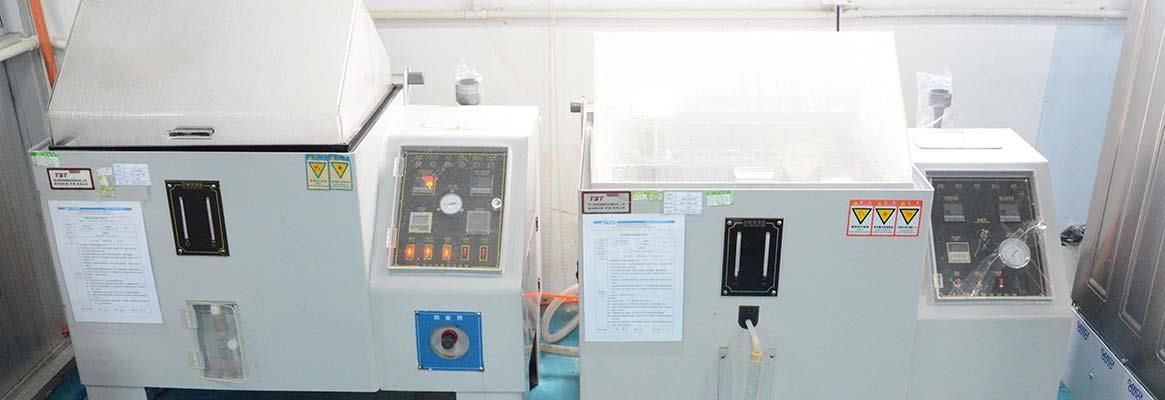What is Salt Spray Test?
The Salt Spray Test is a common test method mainly used to check the resistance of certain items and their surface coatings towards corrosion. This is widely used as it is fast and cheap in comparison with other test methods. Particularly, metallic, stone and ceramic materials or the ones coated with corrosion protection layer are tested. This test is considered essential in the industries where metal components are involved during the manufacturing process.
This test is performed in a chamber where salt water solution is sprayed onto the items to be tested through pressurised air. Highly corrosive environment is formed in the chamber which indeed allows various manufacturers to observe the way products react in particular circumstances. The time taken for the test is dependent on the material tested. For the ones which display more resistivity to corrosion, the duration is more. Chamber volumes or salt water solutions used can vary, dependent on the items to be tested.
Usage of Salt Spray Test in the Zipper Industry
This test is generally used by zipper factories to measure the corrosion resistance of zippers and zipper accessories. It is often regarded as a great way to measure the effectiveness of some zipper coatings and the performance of zippers when they are subjected to certain conditions. Generally speaking, nylon coil and delrin zippers are not exposed to this test. It is mainly applied to electroplated sliders and metal zippers.
As per the testing methods specified, the zippers to be tested are exposed to a 5 per cent salt spray solution between 33oC-36oC and kept in the testing chamber for 24 hours. This period corresponds to 1 year in natural environment. After 24 hours, the zippers are then taken out of the chamber and observed for further evaluation-visual appearance and ease of operation in particular.
Testing Standards & Testing Methods
Common standards used for Salt Spray Test at our metal zipper factories and zipper slider factories are ASTM B117, ASTM D2059, ISO9227 and SBS (QS-QA-054).
Below are the necessary steps that should be considered while subjecting a zipper to Salt Spray Test.
1. Two similar specimens must be prepared, one of which will be for the control that won't be exposed to the test.
2. The test shall be performed with the zipper opened for 1/2 of its length and hung from the rod in the chamber vertically.
3. The temperature within the chamber should be between 33oC-36oC and kept for 24 hours.
4. The zipper specimen should be then taken out and rinsed under the tap water (at room temperature) after 24 hours. Excess water must be blown off through stream of air.
5. Following this, the specimen must be kept aside and set to dry on a horizontal surface at room temperature.
6. It is necessary to observe the presence of corrosion through visual signs in comparison with the sample used for control. Following this, the zipper must be opened/closed for approximately 10 times.
7. After all the primary corrosion tests are done, the zipper must be measured for durability and strength which is considered as an indicator of the corrosion effect on the specimen.
There are a wide array of physical performance tests: ranging from crosswise strength test to deflection & recovery tests of the slider. To conclude, the Salt Spray Test is a great way to measure the performance of some specific zippers and as well as zipper coating performance in corrosive environment.
Reference:
1. SBS zipper
2. Wikipedia








Comments